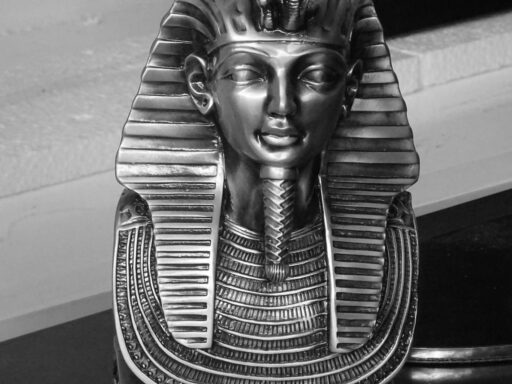Garden gnomes originated from a mix of folklore, garden decoration trends, and cultural exchanges beginning in the 18th and 19th centuries. Their roots lie in supernatural beliefs about helpful household spirits, evolving through time into whimsical garden ornaments. The popular garden gnome figure familiar today was introduced to English gardens in the mid-1800s and became commercially popular after this period, particularly through German craftsmanship.
Early traditions surrounding garden gnomes connect to folklore involving small supernatural beings. Across various cultures, stories describe helpful household entities performing chores or protecting the home. One widespread narrative, known as Migratory Legend 7015 or “The New Suit,” depicts such spirits assisting with daily tasks. This legend and others suggest humans believed in invisible guardians inhabiting domestic spaces.
Carved or modeled statues may have represented these spirits. For example, miners in the American West fashioned small clay Tommyknockers as underground guardians. They would place offerings near these figures, indicating a form of respect for protective spirits. This parallel points to a broader human tendency to embody supernatural helpers in physical form. The notion evolved naturally into garden statuaries meant to evoke goodwill or protection.
Terminologically, the label “gnome” came quite late in English usage. Early on, garden figures of this sort were often called “brownies,” borrowed from British folklore where brownies were rustic household elves. The English term “gnome” entered the vocabulary notably post-1977 following a popular Dutch publication on gnomes. Thus, earlier references and sculptures used different names even though the concept was similar.
The definitive introduction of garden gnomes to the English-speaking world took place through Charles Edmund Isham, an eccentric English gardener. In the 1840s and 1850s, Isham imported 21 terracotta figurines from Germany. These were originally designed as indoor decorative pieces, used as whimsical holders for matchboxes, not purpose-built garden ornaments.
Later, Isham arranged these figurines outdoors as miners in a miniature garden mountain scene. This transformed the objects into what may be the first garden gnome display in England. Isham’s garden was inspired by Japanese miniature gardening traditions and Romantic-era fascination with the supernatural. He described gnomes as “apotropaic wardens,” aiming to ward off evil influences through their presence.
Though Isham opened his garden to visitors, the display remained somewhat eccentric and was not immediately adopted by his aristocratic peers. His daughter removed the gnomes after his death, signaling their initial niche appeal. The movement toward garden gnomes as common ornaments grew through the efforts of German manufacturers, especially in Thuringia. August Heissner started factory production of the little garden dwarfs and actively marketed them, fueling their popularity.
The question of earlier origins is complex. While Isham’s gnomes were initially indoor figures, small gnome-like statues exist in 18th-century Germany and even 17th-century Scandinavia. Their outdoor use by the 1840s suggests a growing cultural trend, but the catalysts remain unclear. Some propose links to 17th-18th century commedia dell’arte dwarf statues or Roman Priapus effigies, possibly related to the gnomes’ iconic red hats. These theories lack strong evidence and appear speculative.
Academic interest in garden gnomes is recent and limited. Historians of gardens paid little attention to them for many years. Only in recent decades, mainly in England, have scholars begun to study garden gnomes as cultural artifacts. The complete, authoritative history of garden gnomes remains unwritten, leaving room for further research into their folklore, artistic evolution, and societal impact.
| Aspect | Details |
|---|---|
| Early Beliefs | Folklore of household spirits helping with chores; Tommyknockers as guardian figures |
| Terminology | Called “brownies” before “gnomes” entered English vocabulary post-1970s |
| Introduction to England | Charles Edmund Isham’s 1840s display of German terracotta figurines arranged in a garden |
| Commercial Popularity | German factory production from Thuringia by August Heissner in late 19th century |
| Academic Study | Recently emerging; garden gnomes largely ignored historically by garden historians |
- Garden gnomes stem from folklore about helpful household spirits and supernatural beings.
- The term “gnome” appeared late; earlier names included “brownies.”
- Charles Edmund Isham popularized garden gnomes in England in the mid-19th century.
- German factories in Thuringia commercialized garden gnome production.
- Exact early origins and influences remain partly speculative and understudied.
What Is the History Behind Garden Gnomes?

Garden gnomes originated from European folklore and were first brought into English gardens by a quirky English gentleman named Charles Edmund Isham in the mid-19th century. Their path from folklore to charming—or some say quirky—garden decorations has been winding, colorful, and sprinkled with a touch of supernatural whimsy.
Let’s dig into the dirt and unearth the history of these tiny terracotta figures that guard gardens worldwide, often wearing bright red hats and mischievous grins.
From Supernatural Helpers to Statues in the Garden
Long before garden gnomes stood next to flower beds, stories circulated about household spirits offering invisible help. Imagine arriving home after a long day to find chores mysteriously done by unseen helpers. The lore of supernatural beings quietly assisting with daily tasks is ancient and widespread.
One popular legend, dubbed ‘The New Suit’ (Migratory Legend 7015 for the folklore buffs), tells of supernatural entities—sometimes in pairs or trios—taking over house or barn duties. These stories encouraged people to imagine these helpful beings as real—or at least friendly enough to inspire statues.
Across the Atlantic, American miners created clay Tommyknockers, mythical underground guardians believed to protect miners while they worked deep beneath the earth. These figures received humble offerings of food in exchange for safety. This stands as an early example of sculpting helpful spirits for protection and goodwill, making it easy to grasp how stone or clay guardian figures in gardens could find favor.
It’s worth noting that the term “gnomes” is a rather late newcomer in English. Earlier, such household guardians were often called “brownies” in England, a name your grandfather might have used casually when crafting figurines in his garden. This was quite common until the 1977 publication of a book titled Gnomes, which helped popularize the modern term.
The Man Who Made Garden Gnomes Famous: Charles Edmund Isham

Enter Charles Edmund Isham, an English eccentric and gardener with a penchant for the supernatural. Around the 1850s, Isham brought 21 terracotta gnomes from Germany to his estate in England—not to line his garden initially, but to decorate his drawing room and cleverly hold matchboxes.
Soon, Isham had a shift in vision. Instead of limiting his gnomes indoors, he placed them in his garden, staging whimsical scenes of miners amid his miniature mountain landscape. This was cutting-edge garden decoration back then! Isham called these figures “apotropaic wardens,” which means guards against evil spirits.
His interest in spiritualism and the Romantic fascination with fairies and supernatural realms made this garden gnome display more than just decoration; it was almost a spiritual statement. Isham even claimed his garden was the first outside Japan to display such figures in this manner—though he drew a strict line between these figurines and traditional statues.
Though the exact date he installed the gnomes remains unclear, it happened sometime after 1850, part of a garden project initiated in 1847.
From Quirky Display to Middle-Class Garden Staple
Isham let visitors wander his garden on Sundays. These guests, mostly middle-class rather than aristocrats, found the display charmingly odd and inspiring. Aristocrats sometimes sneered, considering gnomes “gauche,” while common folks took to replicating the idea.
Germany, particularly the region of Thuringia, embraced gnome production. A man named August Heissner jumped into the game, creating factories and aggressively marketing these terrestrial protectors. Heissner helped transform garden gnomes from niche curiosities into widely available yard ornaments.
Interestingly, garden gnomes often attract criticism for being tasteless or kitschy, much like today’s viral internet memes. Yet, they inspire a blend of irritation and affection, gaining ironic cultural appreciation.
The Roots Grow Deep: Gnome Origins and Mysteries

Although Isham’s gnomes were first intended for indoor use, similar gnome-like figurines trace back to 18th-century Germany, with some Scandinavian statues from the 17th century showing resemblances. By the 1840s, some of these figurines were deliberately made for outdoor display. What brought this change? No one knows for sure.
Curious theories abound. Could garden gnomes be distant relatives of commedia dell’arte dwarf statues from the 17th or 18th centuries? Could their distinctive red hats link back to ancient Roman statues of Priapus, infamous for their—not so modest—phallic symbolism? These ideas sound entertaining but lack substantial evidence.
More likely, the most recent folkloric traditions, emphasizing helpful household spirits or protectors, represent the true roots. These traditions influenced Isham, who wrapped the fantastical in clay and terracotta for a modern audience.
The Neglected Garden Guardians in Academic Circles
It might surprise you that garden gnomes, despite their worldwide fame, have long flown under the radar of garden historians. Only recently has academia started to pay attention, primarily in England, the birthplace of their garden popularity outside Germany.
This neglect means that, despite their global appeal, the complete and authoritative history of garden gnomes remains unwritten. There’s room for curiosity and fresh research to uncover the full story behind these little lawn sentinels.
Why Garden Gnomes Matter Today

Beyond whimsical decoration, garden gnomes evoke folklore, history, and human fascination with the unseen. They act as cultural time capsules, linking modern gardeners to centuries-old stories and beliefs. Whether you see them as kitschy baubles or charming companions, these figures sparkle with rich backstories.
Next time you encounter a garden gnome, consider the thousands of years of stories and traditions it represents. Perhaps that bright red hat hides a protective spirit watching over the tulips and daisies.
Final Thoughts and Tips for Garden Gnome Lovers
- Embrace the story: Use your gnome to spark conversations about folklore and garden history.
- Mix old with new: Pair your trusty gnome with native plants or unique garden art for a personalized space.
- DIY potential: Try crafting a gnome inspired by your cultural heritage or favorite stories—it can deepen your connection to these garden companions.
- Respect tradition: Remember, the gnome wasn’t just for show but linked to ancient ideas of guardianship and good luck.
In the end, garden gnomes stand as more than colorful lawn ornaments. They are symbols of enduring human creativity, belief, and the desire to connect with nature’s magic.
What inspired the creation of garden gnomes historically?
Early stories told of supernatural beings helping with chores. People made statues to honor these helpful spirits. Similar to miners’ Tommyknockers, garden figures were believed to bring good will and protection.
How did garden gnomes first appear in English gardens?
Charles Edmund Isham brought terracotta gnomes from Germany in the 1800s. Originally, they were indoor figurines. Isham placed them outdoors as miners in a garden scene, starting a trend among the English middle class.
Why were garden gnomes called ‘brownies’ before the term ‘gnome’ became common?
Before the 20th century, English speakers used the term “brownies” for similar household guardian figures. “Gnome” was adopted later from Scandinavian language, especially after a popular 1977 book brought attention to the name.
Are there clear historical origins linking gnomes to older art or myths?
Theories suggest links to Roman statues like Priapus or Italian commedia dell’arte figures. However, these are mostly unproven speculations. The strongest roots lie in European folk beliefs about helpful spirits and guardians.
When did garden gnomes become popular and commercialized?
After Isham’s display gained attention in England, middle-class collectors began buying them. German factories, especially in Thuringia, mass-produced garden gnomes, making them widely available despite ongoing mixed opinions.




